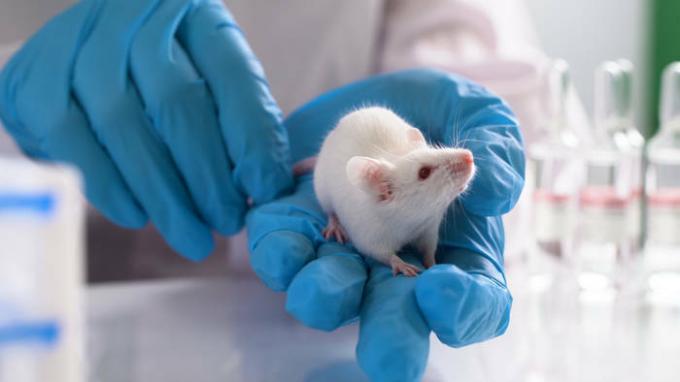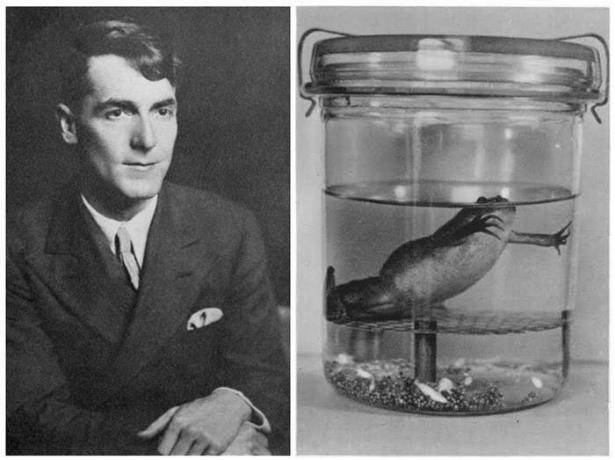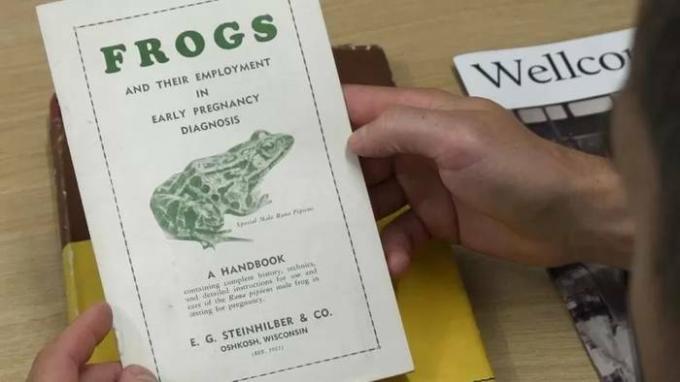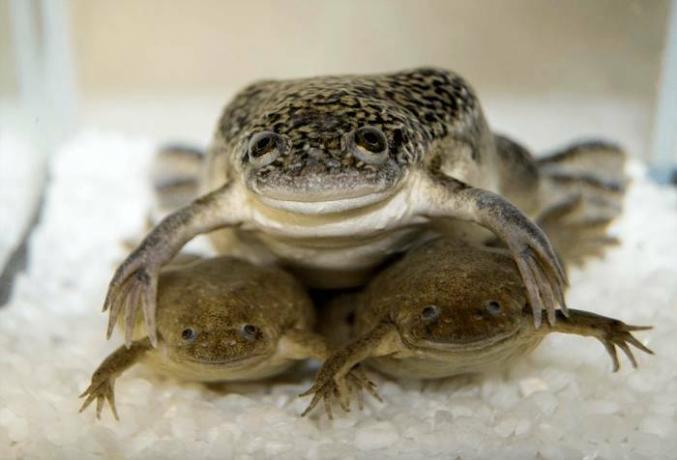In the 20th century, clawed frogs helped determine the pregnancy of a woman. Like the pregnancy test, they reacted to women's urine. The "error" of the frogs was only 2%
Blood pregnancy tests

The first pregnancy tests were carried out on mice / istockphoto.com
People have been trying to determine pregnancy in the early stages for a long time. For example, in ancient Egypt, a woman was asked to regularly urinate on grains of wheat and barley. If wheat sprouted, she was pregnant with a girl. If barley means a boy will be born in the family. If the grains did not germinate at all, there was no pregnancy.
This seemingly absurd method gave good results: although there were often punctures with the sex of the child, the very fact of pregnancy could be established with an accuracy of up to 70%. Later, scientists found an explanation for this phenomenon: the composition of the urine of a pregnant woman really stimulates the germination of cereal crops.
The first laboratory pregnancy test was invented in the 20s of the last century and turned out to be quite bloody. At that time, scientists already knew about hCG and suggested that the pregnancy hormone could cause a corresponding reaction in animals. German researchers Selmar Aschheim and Bernhard Sondek injected the urine of pregnant women into female mice and rats. A few days later, the animals were killed: at autopsy, it turned out that hCG causes a significant increase in the ovaries in females.
The test was called A-Z (Zondeka-Aschheim), but, fortunately, was not widely used. True, several pregnancy diagnostic stations were opened in Europe in such a terrible way, but due to the complexity and duration of the experiment, there were few clients there. Therefore, scientists continued research in this direction, and in the 30s they found an alternative to mice. It turned out to be frogs.
The revolutionary Hogben method

Lancelot Hogben and his pregnancy test / photo batrachospermum.ru
British zoologist Lancelot Hogben devoted his life to studying hormones. He injected them into frogs and then observed the reaction and changes in the behavior of amphibians. For experiments, he took those frogs that were at hand. And since at the age of 30 he had to move to South Africa, the smooth clawed frogs, the most common there, became his experimental subjects.
After learning about the A-Z test and the bloody experiments of German scientists, Hogben decided to inject the urine of a pregnant woman under the skin of the frogs. Imagine the surprise of the zoologist when, after a few hours, the unfertilized females laid their eggs. This gave Hogben the idea that frogs could be used as a live pregnancy test. This test was faster than the "mouse" test, and besides, the frogs did not need to be killed, but could be used again and again.
Hogben returned to Europe, taking with him a colony of frogs. They turned out to be picky, and perfectly survived in laboratory conditions. The accuracy of the frog tests was amazing: in one of research, the description of which has survived to this day, out of 150 frogs, only three "missed" the pregnancy.

"Frog" tests quickly became popular in Europe / photo bbc.com
The Hogben method gained great popularity: laboratories for diagnosing pregnancy on frogs were opened in many European countries. At first they were brought from South Africa, and then they learned to breed in captivity. True, the tests were still not available to everyone: at first, frogs were used only for medical reasons (for example, to distinguish pregnancy from a tumor). In order to be tested, a woman had to see a doctor and get a referral. One of the test participants, Briton Maureen Simons, recalls that she was sent to the laboratory after two miscarriages, writes the BBC website.

Clawed frogs determined pregnancy 40 years / photo biomolecula.ru
In total, the frogs have helped determine pregnancy in women for almost 40 years. Their popularity began to decline only in the 70s, when the first chemical pregnancy test. But even after that, for a good ten years, they surpassed pharmacy test kits with their accuracy. And to be honest, they are still superior, because the accuracy of modern "home" test strips, according to various sources, ranges from 91 to 95%.
You will also be interested in reading:
Pregnancy Test: Top 3 Problems All Women Face
Pregnancy tests: 5 answers to the most popular questions

